of

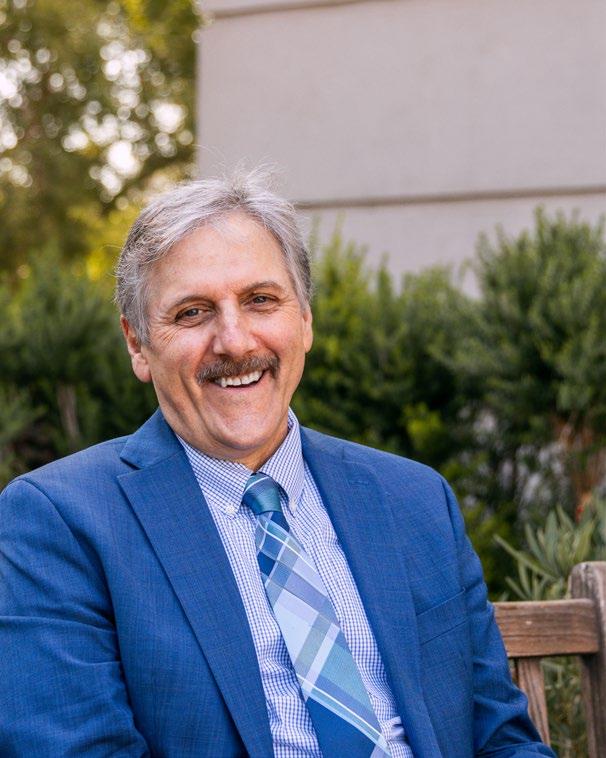
FALL 2021 Agriculture Goes Digital New Ways to Detect COVID-19 Alumnus Michael Coffey Gives Back Big Data, AI and Machine Learning in Medicine Welcome Richard L. Corsi Dean, UC Davis College
Engineering
Engineering Progress is published twice a year by the College of
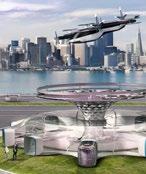

Richard L. Corsi
College of
Alyssa Panitch
Associate Dean,
Jessie Catacutan
Assistant Dean,
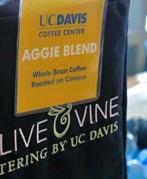
Ralph Aldredge
Dean,
Roland Faller
Associate Dean, Facilities and
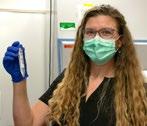
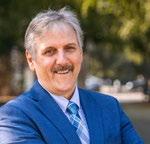
and
Cristina Davis
at
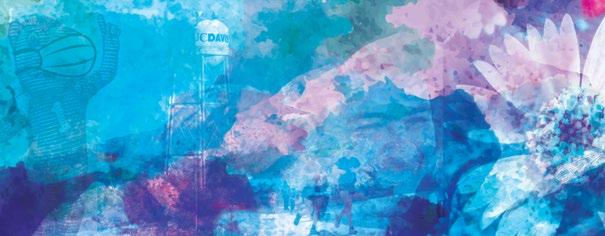
Dean,
Ann Hartman Assistant Dean,
Steve Pigg
and
Director
Rubio-González
Advisor to the Dean
Fadi
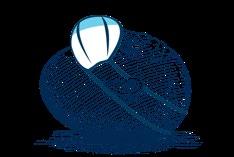
ENGINEERING PROGRESS / FALL 2021 3 UC Davis Engineering Progress • Fall 2021
Engineering
UC Davis.
Dean,
Engineering
Executive
Academic Personnel and Planning
Executive
Administration and Finance
Associate
Undergraduate Studies
Capital Planning
Graduate Studies
Associate
Research Leigh
Development
External Relations
Executive
Information Technology Cindy
Faculty
for Diversity and Inclusion DEPARTMENT CHAIRS
Fathallah Biological and Agricultural Engineering Steven George Biomedical Engineering Tonya Kuhl Chemical Engineering Christopher Cappa Civil and Environmental Engineering Matthew Farrens Computer Science André Knoesen Electrical and Computer Engineering Yayoi Takamura Materials Science and Engineering Bahram Ravani Mechanical and Aerospace Engineering ENGINEERING PROGRESS Rachel Steere Communications Specialist Noah Pflueger-Peters Content Specialist Cristina Deptula Content Specialist Rob Riedel, ATS Design 4 Message from the Dean 6 New Ways to Detect COVID-19 10 Mike Coffey Gives Back 12 COVER: Meet the new Dean 18 Coffee Needs Research 21 Agriculture Goes Digital 24 Women Machinist Club 26 Give Day’s Impact on COE 30 Your Flying Taxi is Almost Here 34 The Algorithm Will See You Now 39 Points of Pride CONTENTS 6 College of Engineering University of California, Davis One Shields Avenue, Kemper Hall 1042 Davis, CA 95616 https://engineering.ucdavis.edu/ 12 30 18 21 UC Davis established a robust plan that prepared campus for return of research, operations, instruction and other activities this fall. Learn more about what UC Davis is requiring to keep the community safe and check out the new policies, guidelines and protocols. campusready.ucdavis.edu
Message from the Dean
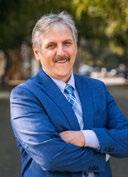
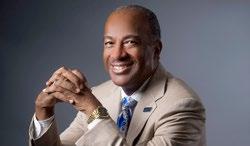
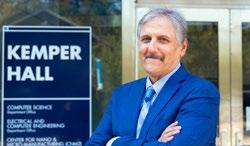
What a journey! UC Davis propelled me into a fulfilling academic career after receiving my M.S. and Ph.D. degrees in civil (environmental) engineering. am beyond thrilled to return to UC Davis and to assume the reins of dean of the College of Engineering. I know firsthand what this institution does for aspiring engineers, no matter their life experiences. We are a true community of scholars. My return to this wonderful community after 32 years comes with great pride, and a deep sense of finding my way home.
The UC Davis College of Engineering will continue to be a leader in terms of rapid response to challenges that impact society. The current COVID-19 pandemic is a prime example. Our faculty have responded by developing a method for rapid diagnosis of COVID-19 and its patient-specific severity by breath analysis, using wastewater sampling to identify SARS-CoV-2 viruses discharged from dozens of buildings and sewers across the City of Davis, analyzing the efficiency and effectiveness of masks for reducing respiratory aerosol emissions and inhaled uptake, and developing and analyzing effective and low-cost air cleaners that are more accessible to those without resources to protect themselves.
We look to the future as leaders who will make significant contributions to solving longer-term challenges that affect humankind and the planet. Sustainability has always been the ethos of our college and UC Davis as an institution, and we are working on many fronts to study the impacts and mitigation of climate change. Our work in this area will continue to grow in its importance and impact. We will address how to feed the world in a time of climate crisis and labor shortages. We will continue our cutting-edge research in areas of energy efficiency, advanced sensor applications for energy and water conservation, low emitting transportation systems, climate resilient infrastructure, wildfire impact analysis and more. We will also continue to improve population health through the advancement of biomedical imaging systems. Critical to many of these challenges will be growth in our existing strengths associated with data science and engineering, machine learning and artificial intelligence.
We will continue to provide an inclusive environment and a holistic engineering education that addresses social and environmental justice in the context of engineering technology and applications. We have also launched an Innovation Ecosystem that will leverage a new 23,000 square foot Engineering Student Design Center programmed to provide an unparalleled continuous design experience for our students, coupled with opportunities to engage in entrepreneurship through our student start-up center, national competitions, undergraduate research experiences and “dean’s challenges”.
It is an exciting time to be the dean of a college with so many impactful and exciting initiatives that are ongoing and planned for the future, and a community of scholars committed to making the world a better place for all. In this issue of Engineering Progress, you will read about a small, yet impressive slice of our student, faculty and alumni accomplishments. What a time to come home.
Alumni Involvement Opportunities
ENG 3 Intro to Engineering Design Fall Showcase
December 7,
-
Alumni, faculty, staff, graduate students and universityaffiliated guests are invited to participate in the Fall 2021 Final Design Showcase. Show support for students’ work and provide feedback on their communication and design skills as an evaluator.
https://engineering.ucdavis.edu/events/eng-3-introengineering-design-fall-showcase
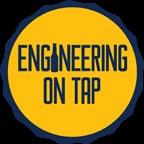

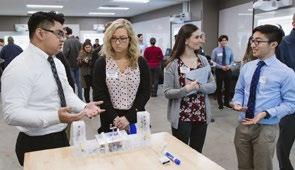

4 UC DAVIS COLLEGE OF ENGINEERING ENGINEERING PROGRESS / FALL 2021 5
Go Ags! Richard L. Corsi Dean, UC Davis College of Engineering COLLEGE OF ENGINEERING
2021 | 1:00pm
3:00pm
Alumni can get involved with the College of Engineering virtually through the online opportunities listed below. To learn more or sign up to participate, visit engineering.ucdavis.edu/alumni/get-involved/ Engineering On Tap: A Conversation with Chancellor May and Dean Corsi February 22, 2022 5:00pm - 6:00pm The winter quarter edition of our popular series is online! Grab a drink, some snacks and join us for a conversation with Chancellor Gary S. May and Dean Richard Corsi from the comfort of your home. https://engineering.ucdavis.edu/events/engineering-tapconversation-chancellor-may-and-dean-corsi
New Ways to Detect COVID-19

 By Noah Pflueger-Peters
By Noah Pflueger-Peters
UC DAVIS ENGINEERS CRISTINA DAVIS AND HEATHER BISCHEL are using their respective expertise to develop new ways to detect COVID-19.
Davis is developing a portable breathalyzer-like device that rapidly diagnoses COVID-19 and tells doctors how severe the case is going to be. Bischel is using wastewater to detect the virus, follow viral trends across the City of Davis and the UC Davis campus and help prevent outbreaks. Both methods are poised to become staples in the response to COVID-19 and future pandemics.
A BREATH TEST FOR COVID
Mechanical and aerospace engineering professor Cristina Davis’ lab is working to find COVID’s “breath signature” and develop handheld devices that can identify it quickly and accurately, as well as predict the severity of the case. When the pandemic hit, her team was developing similar devices for the flu with collaborators at the UC Davis School of Medicine, so they quickly pivoted to COVID.

Davis and her colleagues have received $2 million from the National Institute of Health, the U.S. Department of Veteran Affairs and University of
California’s CITRIS and the Banatao Institute and they are already enrolling patients in clinical studies.
“The idea that exhaled breath could hold diagnostic potential has been around for some time,” Davis told the New York Times’ Emily Anthes, who featured the project this summer. “There are reports in ancient Greek and also ancient Chinese medical training texts that reference a physician’s use of smell as a way to help guide their clinical practice.”
To find the “breath signature,” the team is looking at two aspects of breath—condensate and vapor.
Condensate is a collection of millions of tiny aerosol droplets that are exhaled, condensed into a liquid in the devices. These aerosols, which help spread the virus, come from the airway and lungs and can contain chemical and biological markers that show how sick a person is. Vapor is the chemicals people exhale: nitrogen, carbon dioxide, oxygen and volatile organic compounds (VOCs), which give breath its smell. Dogs have been trained to detect diseases like diabetes from smell, so the idea that this could be done for COVID isn’t far-fetched.
“All of these inflammatory markers can show up in these metabolites and tell us a lot about your airway
6 UC DAVIS COLLEGE OF ENGINEERING ENGINEERING PROGRESS / FALL 2021 7
Wastewater sampling on the UC Davis Campus. (Healthy Davis Together)
Assistant professor Heather Bischel with a wastewater sample. (Katherine Hung/ UC Davis)
Feature Story
New Ways to Detect COVID-19


health and how you’re doing,” explained Mitch McCartney, the lab’s research director, adding that this is a way to detect the “cytokine storm” COVID causes that can lead to organ damage.
If successful, the team sees the devices both as inexpensive, non-invasive and rapid alternatives to polymerase chain reaction (PCR) and cotton swab tests, as well as a way for doctors to remotely monitor their patients’ condition when they’re at home.
“It would be a device you can breathe into at home that could do all of the chemical analysis of your breath, then upload that information to your doctor,” said McCartney. “This device might be able to alert your doctor if your inflammation levels are increasing so they can preemptively ask you to come into the hospital.”
Though these devices are being developed in response to COVID-19, Davis and McCartney think they’ll become invaluable tools for medical practitioners and public health officials.
“The research opportunities are pretty broad for how we, as environmental engineers, can contribute to combating public health challenges,” she said. “I think we’re just scraping the surface right now.”
Bischel was already researching ways to detect viruses in wastewater before the pandemic, so when it was clear this could work with COVID-19, she and her UC Davis colleagues Karen Shapiro at the School of Veterinary Medicine and Jonathan Eisen at the College of Biological Sciences put together a proposal to begin wastewater monitoring on campus.
The campus set up a successful pilot program in summer 2020. It was expanded to 22 locations a few months later as students began living on campus. Shortly afterwards, HDT approached her about setting up a similar system for the City of Davis and the groups have been partners since.
To Bischel, the next step is expanding wastewater monitoring equitably. California’s cities have robust wastewater treatment systems, but rural communities— which often have lower testing and vaccination rates— don’t have resources to add COVID-19 monitoring to their operations. In collaboration with a colleague at UC Merced, the lab has begun onboarding wastewater treatment facilities in rural parts of Yolo, Stanislaus and Merced Counties. Their goal is to understand the unique challenges these communities face and how to address them.
“When this pandemic is over, we can take advantage of the infrastructure we put in place,” she said. “Water quality monitoring is already commonplace for wastewater facilities, but there’s an opportunity to use virus monitoring as an ongoing public health tool for pandemic prevention.”
WASTEWATER AS AN EARLY WARNING
Civil and environmental engineering assistant professor Heather Bischel leads the COVID-19 wastewater monitoring effort for the UC Davis campus, Healthy Davis Together (HDT)—the City of Davis’ asymptomatic testing program—and Yolo County.
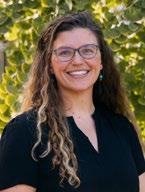
“Many people don’t get tested until they’re symptomatic, but they’ll start shedding the virus about a week before they show symptoms, so wastewater is a way to catch COVID early,” she said.
Wastewater samples are taken from 42 buildings or groups of buildings on the UC Davis campus and 24 neighborhood locations across the City of Davis and delivered to Bischel’s laboratory multiple times per week. The team treats the samples and runs a PCR test to look for the presence and concentration of RNA associated with the SARS-CoV-2 virus that causes COVID-19.
If a building or neighborhood has multiple strong positive results, they know there’s likely an increase in cases in that area and perhaps an outbreak. City or campus officials can then send targeted messages to residents encouraging them to exercise caution and get tested to prevent community spread. On the UC Davis campus, it’s also a way to verify asymptomatic testing results.
“Our monitoring gives the public health response team some peace of mind if the environmental information corroborates what we’re seeing with testing,” she said. “It triangulates the evidence.”
Bischel says the project is both research and service. She is working with UC Davis statisticians to assess the effectiveness of sub-sewershed sampling in cities, and her lab is experimenting with different methods of sample processing and testing to make the program fast and efficient. The HDT team is also testing the viability of the targeted messaging system on a large scale. Developing these best practices will help communities better respond to this and future pandemics.
A map of the 24 wastewater surveillence regions in the City of Davis. (Healthy Davis Together)

8 UC DAVIS COLLEGE OF ENGINEERING
ENGINEERING PROGRESS / FALL 2021 9
Professor Cristina Davis.
(Gregory Urquiaga/UC Davis)
Assistant professor Heather Bischel. (Katherine Hung/UC Davis)
Alumnus
Michael Coffey Gives Back to UC Davis through the LEADR Program
By Rachel Steere
MICHAEL COFFEY, RETIRED SENIOR VICE PRESIDENT, global delivery and assurance at AT&T Services, Inc. and UC Davis College of Engineering alumnus (B.S. ’84, electrical engineering), is giving back to the UC Davis College of Engineering through an endowment fund for the Leadership in Engineering Advancement, Diversity and Retention (LEADR) program.
The LEADR program is a student support program in the College of Engineering whose mission is to recruit, retain and graduate a diverse population of undergraduate engineering students and prepare them for post-graduation careers, whether it be in industry or graduate school.

The Coffeys have been long-time supporters of the program through current-use gifts. In fall 2020, they committed $50,000 to establish the Michael and Jody Coffey Fund for LEADR and have allocated another $250,000 through their estate to bolster the fund in the future. This was the first endowment for LEADR, and ensures that it will have perpetual support. These funds

help support the program’s greatest needs, such as student scholarships, trips to visit industry partners, mentorship activities and various learning sessions.
“This is a commitment to future generations,” said Coffey. “My education from UC Davis was the starting point of my journey to success, and I hope that this gift will provide opportunities for students to discover and achieve their potential too.”
LEADR OFFERS ADVISING that focuses on academic and personal growth, professional development and career readiness support. To join LEADR, students must be the first in their families to attend college or be a part of the Educational Opportunity Program, have participated in a mathematics, engineering, science achievement (MESA) pre-college program such as Upward Bound or a similar enrichment program, or be a student who has potential for leadership in increasing the participation of students in engineering from historically underrepresented groups.
:

Tanya Whitlow
Tanya Whitlow started the LEADR program in 2012 to provide a support group for firstgeneration students grounded in an advising foundation. She served as director of the program until May 2021.
 - MICHAEL COFFEY
- MICHAEL COFFEY
Coffey was the first in his family to attend college and his wife Jody says that he would not be where he is today if it weren’t for UC Davis. Coffey started to get involved with LEADR while he was working at AT&T, and it is something that he remains passionate about as he visits UC Davis annually to meet and talk with the students.
“As a first-generation college student, I resonated with the mission of LEADR, what it stands for, how it welcomes and engages students, the sense of community it offers and the tools it provides to students to overcome obstacles and achieve life goals,” said Coffey.
He wants to help ensure that undergraduate students in the college can enjoy access to beneficial resources such as the LEADR program.
“I want the students we are supporting to know that anything is possible,” said Coffey. “If they work hard, stay focused and determined, and position themselves for opportunities to succeed, then good things will happen.”
Chevron, one of the program’s sponsors and supporters, recently allocated $50,000 to seed an endowment in Tanya’s honor. Anyone who knew and admired Tanya, or believes in the LEADR program, is invited to invest in this scholarship. If you would like to contribute to the Tanya Whitlow Scholarship with Support from Chevron and Friends please visit: bit.ly/ TanyaWhitlowScholarship
“Chevron was compelled to seed an endowment to the LEADR program to honor Tanya’s legacy and commitment to first-generation and underrepre sented students,” said Cynthia Murphy-Ortega, manager, university partnerships and association relations, Chevron Corporation and UC Davis Col lege of Engineering alumna (B.S. ’91, chemical engineering). “We hope these funds continue to support LEADR’s mission and help make an impact on these students for years to come.”
Read more about Tanya’s legacy here: engineering.ucdavis.edu/news/memoriamtanya-whitlow.
LEADR10 UC DAVIS COLLEGE OF ENGINEERING ENGINEERING PROGRESS / FALL 2021 11
Students participating in the LEADR program. (COE Staff/UC Davis)
Michael and Jody Coffey. Photo courtesy of Christ the King Church.
Tanya Whitlow, former director of the LEADR Program.
I N MEMORIAM
“MY EDUCATION FROM UC DAVIS WAS THE STARTING POINT OF MY JOURNEY TO SUCCESS, AND I HOPE THAT THIS GIFT WILL PROVIDE OPPORTUNITIES FOR STUDENTS TO DISCOVER AND ACHIEVE THEIR POTENTIAL TOO.”
Meet Dr. Richard L. Corsi, New Dean of the College of Engineering
By Rachel Steere
DR. RICHARD L. CORSI HAS RETURNED TO HIS ALMA MATER
32 years after receiving his M.S. and Ph.D. in civil (environmental) engineering as the dean of the UC Davis College of Engineering. He began his appointment on September 15.

“I look forward to inspiring students every year of their education, broadening participation, investing in strategic areas for research and education, growing the extent and impact of the research enterprise, increasing visibility, sustaining a strong community of scholars and caring for one another and enjoying and taking great pride in what we do as a community,” said Corsi. “I know how much the College of Engineering and the institution can change a life for the better. That knowledge drives me to provide such opportunities for others.”
Corsi is a leading expert in the field of indoor air quality. His early-career research focused on toxic chemical emissions from municipal and industrial wastewater. For the past 25 years, his research focus has been related to indoor chemistry and reducing inhalation exposures of building occupants to harmful air pollutants of both outdoor and indoor origin. During the past 18 months, he has been actively engaged in national discussions on layered risk reduction to reduce transmission of COVID-19 by aerosol particles inside buildings.
12 UC DAVIS COLLEGE OF ENGINEERING
ENGINEERING PROGRESS / FALL 2021 13
Dean Richard L. Corsi. (Katherine Hung/UC Davis)
Corsi earned his B.S. from Humboldt State University in environmental resources engineering and both his M.S. and Ph.D. in civil (environmental) engineering from UC Davis.

From 1994 to 2018, he was on the faculty of the University of Texas, Austin, serving as chair of the Department of Civil, Architectural and Environmental Engineering from 2013 to 2017. Since 2018, and concurrent with his position as dean of the College of Engineering and Computer Science at Portland State, he has been emeritus chair and professor of civil, architectural and environmental engineering at UT Austin.
His past experience has greatly prepared him for his role.
“While I was the chair of a very large and highly-ranked department at the University of Texas at Austin and dean of a moderate-sized College of Engineering and Computer Science at Portland State University, I led the development and implementation of bold strategic visions, oversaw significant curriculum reform, worked to improve inclusiveness and strength of community, increased communications regarding accomplishments in our community, built new partnerships and raised funds to support students and critical infrastructure needs.”
Corsi says the UC Davis College of Engineering gave him the skills and confidence that propelled him into a wonderful life that he never dreamed he would have.
“I am a first generation American and a first-generation college student,” said Corsi. “My mother never made it to high school and my father finished his high school degree at the age of 44 by taking night courses, when I was five years old. I was not expected to go to college, nonetheless graduate, get a Ph.D., become a professor and eventually a dean. My parents were deeply supportive of my quest for education. My father passed away two months before I handed in my doctoral dissertation at UC Davis. He loved visiting my wife Gina and I when we were in graduate school. I think of him often and know that he, too, would be thrilled that we have moved back to Davis. It all seems so complete.”
Corsi’s contributions to society, his field and his institutions have been recognized in many awards and honors.
“I do not think that someone should be a dean if they do not love everything about academia, caring deeply for students and enjoying the exploration and discovery of research. I love everything about academia. I love being around bright, aspiring students, innovative faculty colleagues and hard-working staff. I love meeting alumni and hearing how their experiences as a student helped shape their journey in life. I love working with fellow deans to make the entire institution a better place for all,” said Corsi.
Below, we get to know more about dean
Corsi and learn about his priorities, goals and vision for the College of Engineering.
What are you looking forward to most in this new role?
I am thrilled to be returning to a university that has such a deep sense of community, that values multi-disciplinary collaboration and success, that has been deeply committed to sustainability from its inception and that understands the extraordinary and positive impacts that it has on students who come from a wide range of life experiences. I am looking forward to all things UC Davis!
What inspires you?
Three things come immediately to mind. I know the pressure that can be placed on first-generation students and am inspired to watch them grow as engineers, succeed, walk across the stage at graduation and then succeed in their careers. This process of growth to success is about as inspiring as it gets. I am inspired by the tireless efforts of academic staff. They are the gears that keep universities running hour-by-hour and day-by-day. They do not typically receive the recognition they deserve, but often work with the deepest of commitment to serve students and faculty.
Finally, I am inspired by the field of engineering and all of the possibilities that it brings for improving the human condition and protecting and healing the natural environment. Think of the technologies that engineers will develop and employ in the future to combat climate change and its impacts, stave off pandemics, improve human health, improve mobility and feed the world. I am biased, but engineering is pretty darn inspiring!
What is your vision for the UC Davis College of Engineering?
Students should be drawn to UC Davis to study engineering because they want a great education, but
also to be inspired about possibilities for making the world a better place. The college is well-positioned to reimagine what engineering education is and to lead others into the future. We can, and will, grow an exciting innovation ecosystem that follows undergraduates throughout their education and provides a multitude of opportunities for graduate students as well.
Our college is already working in many areas that address issues critical to society and the natural environment. We will focus on increasing crossdepartmental and cross-college teams necessary to address complex tipping point issues that face humankind and the planet. There are many examples for which the UC Davis College of Engineering can be acknowledged as a national and international leader–from climate change adaptation and mitigation to advances in technologies that improve human health–we are so well-positioned to leverage our existing expertise, partners across other schools and colleges at UC Davis and external partners and stakeholders.
Finally, we should use an equity lens for all that we do, never forgetting that the grand challenges that humankind faces often have the greatest impacts on underserved communities. Engineering education and research opportunities should be available to all and promoted for those historically underrepresented in engineering.
What are some of your top priorities or efforts that you are most excited to start implementing in the College of Engineering?
I must acknowledge that there are already many great initiatives in the college, from broadening participation and student success at the undergraduate level to stoking the college research trajectory. We must sustain and grow these successful initiatives. Much of my first year as dean will involve climbing a steep learning curve, getting to know faculty, staff, student groups, fellow deans, alumni and external partners. At the same time, I intend to begin focused discussions within our community regarding strategic vertical and horizontal research themes that can be used for purposes of
NEW DEAN Q&A 14 UC DAVIS COLLEGE OF ENGINEERING ENGINEERING PROGRESS / FALL 2021 15
Dean Corsi in his UC Davis regalia in 1989.
(Photo courtesy of Dean Corsi)
I AM A FIRST GENERATION AMERICAN AND A FIRST-GENERATION COLLEGE STUDENT... I WAS NOT EXPECTED TO GO TO COLLEGE, NONETHELESS GRADUATE, GET A PH.D., BECOME A PROFESSOR AND EVENTUALLY A DEAN.
investment, concentrated hiring of future faculty and development of new partnerships.
I am eager to see the Diane Bryant Engineering Student Design Center to completion and to sequence activities that fuel excitement, exploration, discovery, innovation and entrepreneurship, and inspire our students. I am also hopeful that we can expand research experiences for undergraduate students and mentoring experiences for graduate students who aspire to careers in academia. Seeding new efforts to grow our already healthy research enterprise is important to me.
Broadening participation at the graduate level is important if we want to eventually see faculty of engineering across the United States reflect the population as a whole. We must and will act to do so by providing more research experiences for those from groups traditionally underrepresented in engineering, adding diversity to our faculty and developing robust external partnerships that lead to a diverse pipeline of graduate applications. Lastly, recognizing, engaging and empowering staff is important to me.
What stands out about UC Davis and the College of Engineering compared to the other universities you have been with?
The institution has deep commitments to community, caring for students, broadening participation, sustainability and impactful research. It has a strong sense of purpose and grounding with respect to serving California. The College of Engineering is no different, pushing so many of the right buttons. That’s what makes it such a pleasure and honor to be a member of this community.
What are you looking forward to about living in Davis again?
I look forward to being a part of a community with a collective commitment to sustainability, from a local to global level, and the innovation and excitement that comes from being in a place driven by a worldclass university. I love the youthful energy of Davis
that is fueled by UC Davis, the parks and greenbelts and the feel of the downtown business district. It is an extraordinary city.
What do you like to do in your free time?
My wife Gina and I love dogs and I enjoy teaching them and having them teach us. We were a foster home for a border collie when we were graduate students at UC Davis. I got attached, and he became our first canine child. We have since had two more herding dogs. Our current dog is a brilliant Australian cattle dog who is 17 years old. She is doing her best to teach me how to grow old gracefully. I also enjoy writing songs for acoustic guitar and playing guitar. I love almost all sports and particularly admire student athletes. I was an academic advisor to the men’s basketball team during my first faculty position at the University of Guelph in Canada. It was a fulfilling and fun experience. My sport in my younger years was baseball. I was a pitcher and continued to play until I was 32 years old in a city league in Canada, before my “career” was ended by a torn rotator cuff. I have been happily married to Gina for 38 years. She received her graduate degree in computer science at UC Davis. If it is possible to be beyond thrilled to return to Davis, that’s what we are. It feels like coming home after a 32-year life journey that was propelled by UC Davis. It feels like a perfect circle.

UC DAVIS COLLEGE OF ENGINEERING APPAREL AND MORE!

All UC Davis Stores profits go back to student programs and services.
Shop UC Davis Stores for all your College of Engineering gear, from T-shirts and sweaters to caps and messenger bags. Visit our co-branded online store with Promoversity, where you can get specialized gear at competitive prices.
16 UC DAVIS COLLEGE OF ENGINEERING ENGINEERING PROGRESS FALL 2021 17
bit.ly/UCDavisRetail
Dean Corsi, his wife Gina and their cattle dog, Chloe.
(Photo courtesy of Dean Corsi)
COFFEE NEEDS RESEARCH:
UC Davis’ New Coffee Center Dedicated June 25th
By Cristina Deptula
WORLD CLASS RESEARCH in food science and technology, economics, chemistry, agriculture, sociology and many other fields are percolating at UC Davis’ new College of Engineering’s Coffee Center.
Officially dedicated on Friday, June 25, the center welcomed Chancellor Gary May, Coffee Center director and chemical engineering professor William Ristenpart and postdoctoral researcher Mackenzie Batali, along with others in the field, to speak at their kickoff event.
This well-attended combined research symposium and gala celebration was held at the Robert Mondavi Institute’s Sensory Theater, the Putah Creek Lodge and the Coffee Center. Attendees, mainly representatives of the coffee industry, enjoyed a catered meal from Olive and Vine and sipped champagne while hearing about the Center’s broad ambitions.


Ristenpart kicked off the event with a firm declarative statement: “Coffee Needs Research.” The lineup of speakers following him demonstrated that this is well underway.


Presentations ranged from Batali’s talk on observable vs. perceived acidity in differently brewed cups of coffee to interviews with coffee producers in Guatemala on how climate, migration and market forces are affecting their businesses, to talks on factors affecting coffee’s color, the use of desiccants, and the science of immersion brewing. The graduate student researchers who presented served some coffee samples and stayed on hand to answer questions.
The Center includes over 50 UC Davis faculty members from a range of academic fields and has received funding from a variety of corporate and individual donors in the coffee space. At 6,000 square feet, the multi-bay laboratory facility is located in a recently remodeled materials science lab within walking distance of the Mondavi Institute. The goal is to build on and expand UC Davis’ vibrant existing research to create facilities for studying coffee comparable to those for wine and tea.
The center galvanizes both teaching and research, with Probat Roasting Fellow Juliet Han serving as head roaster and manager of the undergraduate coffee laboratory. A former retail roaster and coffee quality grader, Han represents the center to people inside and outside UC Davis, including students, faculty and coffee industry leaders, in a new position funded for three years by Probat, a maker of coffee roasting equipment.
The UC Davis Coffee Center is the world’s first academic research center focused on coffee, aiming to do for coffee what UC Davis has done for beer and wine. Through its research, teaching and mentorship, the center plans to train the next generation of coffee professionals while improving the entire industry and making it more sustainable.
18 UC DAVIS COLLEGE OF ENGINEERING
ENGINEERING PROGRESS / FALL 2021 19
Dr. Ristenpart presents on UC Davis’ coffee research. (Dominic Alessandro Dal Porto/UC Davis)
Gathering for research presentations. (Dominic Alessandro Dal Porto/UC Davis)
ABOVE: Guests mingle at the new Coffee Center.
(Dominic Alessandro Dal Porto/UC Davis
INSIDE THE NEW UC DAVIS COFFEE CENTER HTTPS://WWW.YOUTUBE.COM/ WATCH?V=KIBMEOLFF5G
She highlights how industry funding helps enable the educational and scientific work of the center.
“The Coffee Center has to be both things: it has to have professional benefit and academic benefit. It is really important that research being done here is public. Part of my role is to help answer questions the coffee industry has, since we don’t want to be in this vacuum of academic questions. A lot of researchers just focus on one thing and continue to zero in, but engineers can take the big picture too, and use process flow diagrams to understand big systems, like coffee trading itself for example,” said Han.
Han oversees “The Design of Coffee,” one of the campus’ most popular electives, taught by Ristenpart and fellow chemical engineering professor Tonya Kuhl in the undergraduate coffee science lab. The course introduces students to chemical engineering principles while they learn to brew coffee and eventually compete to craft the most delicious beverage using the least amount of energy.
This course was first offered in 2013 and became a hit with students, and the lab guide that accompanies it was re-released to the general public. Other courses explore world history and sociology through the development of coffee culture, and ecology and the economics of agriculture and world trade through the quest for a truly ‘just’ and ethical cup of coffee.
UC Davis produces and roasts our own blend of coffee.

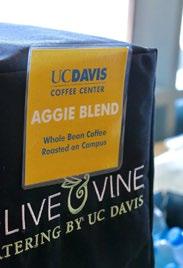
Photo above: Assistant professor Alireza Pourreza.
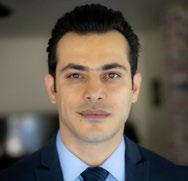
Photos below: A Virtual Orchard simulation of a citrus orchard.
Agriculture
GOES DIGITAL
Active areas of research at the Coffee Center include fermentation microbiology, chemical kinetics and reaction pathways during roasting, the chemistry of green/unroasted coffee bean storage, food safety for cold brew and the identification and characterization of flavor molecules. Ecological sustainability is also a major interest, as researchers are working on the repurposing of coffee cherries (the fruit surrounding the bean) and energy efficiency during roasting and brewing. Research is also underway into the human side of coffee sustainability: the economic and legal framework within which people around the world grow and harvest coffee.
Coffee Center researchers have been published in a wide-ranging set of impactful academic publications, including the Journal of Psychopharmacology. Their work, at the intersection of many disciplines, is poised to continue and catalyze a new era of coffee research.
By Noah Pflueger-Peters
TO PRODUCE FOOD FOR A GROWING POPULATION and a changing climate, growers need to understand their crops on an individual level.
Irrigating an entire orchard or vineyard with the same level of water and nutrients may make some plants excel at producing nuts or fruit, while others might be getting more than they need. Not knowing this can lead to disappointing crop yields, wasted water, high costs and long-term damage to both the plants and the environment—all of which can devastate a grower.
The UC Davis Digital Agriculture Laboratory sits at the intersection of agriculture and digital technology. Led by biological and agricultural engineering assistant professor Alireza Pourreza, the lab works directly with growers to develop and deploy technology that gives them the information they need to better understand their plants and navigate our changing climate.
“The goal is to develop data-driven solutions for growers on a highprecision and per-plant basis,” he said. “This will simultaneously give them an insight into the health and productivity of their crops, where they are losing money and how they can improve management to increase yield and reduce the environmental impact.”
A VIRTUAL ORCHARD

One of the lab’s most beneficial projects is helping growers predict how much their crops will produce, which is largely determined by how well each plant receives and absorbs sunlight.
“If we understand how much light would be available to each plant during the season, we can estimate photosynthesis and the amount of yield,” said Pourreza.

ENGINEERING PROGRESS / FALL 2021 2120 UC DAVIS COLLEGE OF ENGINEERING
UC Davis’ College of Engineering at the Coffee Center. (Dominic Alessandro Dal Porto/UC Davis)
(Dominic Alessandro Dal Porto/ UC Davis)
The UC Davis Digital Agriculture Lab uses cutting edge sensing and mechanization technology to help growers get the most out of their crops
Using data from aerial sensing and the virtual orchard, researchers can estimate the canopy cover of each tree in an orchard.

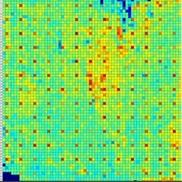
“If we do this early in the season, we can manage each tree based on its capability and needs.”
To do this, the lab uses one of its hallmark innovations— the virtual orchard. Using drone imaging data, the team can create highly-detailed 3D reconstructions of an entire orchard in virtual reality. This allows them to examine data on individual plants in detail and run simulations.

In a recent project, the team modeled the mid-season sun position for an almond orchard to model light absorption by each tree’s canopy. This helped the growers predict how much each tree would produce so they could manage each zone of trees differently, as well as optimize pruning to improve the canopy’s ability to absorb sunlight.
Recently, the team has worked to expand the virtual orchard’s success by designing a complementary web app. The app lets growers easily view and interact with their simulated orchards and Digital Ag Lab’s data analytics and filter results to look at specific plants to understand the conditions that will make them grow best.
SEEING PLANTS IN A NEW LIGHT
According to Pourreza, many growers now either own or rent drones and he expects the number to continue rising.
“With the availability of drones and the price dropping every day, it’s more accessible to growers and it’s a great tool for monitoring,” he said.

One of the most powerful sensing tools the team has is hyperspectral imaging. Hyperspectral imaging covers more than 300 wavelengths of light and captures things that humans can’t see with their eyes. These “hidden” wavelengths contain detailed information on each plant, such as how effectively it’s conducting photosynthesis or whether it’s sick—one of the leading causes of low yield.
on infected plants before it becomes a major problem.
COMBATING CLIMATE CHANGE
The Digital Agriculture Lab’s technology is poised to play an important role in combating climate change, where efficiency and sensitivity to the environment are critical.
An example comes from the lab’s agricultural mechanization work. Almond growers need to get as large of a pesticide coverage as possible on their plants, but spraying too much means spraying toxic droplets that can pollute the air and drift to nearby schools or residential areas.
So, the team designed and built a spray backstop—an orchard sprayer attachment topped with a screen that looks like a large, wide umbrella. The screen is just tall enough to go over the treetops, and it blocks drifting spray droplets before they are released into the air. Pourreza says the growers were thrilled and he sees the potential for the idea to be commercialized.
Sensing technology can also be used to accurately measure different crop phenotypes—a plant’s traits like size, shape and color that are influenced by both genetics and the environment. With sensing, researchers can find the best genotype for different environments—such as those that are resistant to droughts or nematodes—and introduce them to the growers.
“If we continue growing the plants that we already have, rising temperatures or cold weather in the beginning of the spring might cause us to lose all we have in our orchard,” said Jafarbiglu. “But if we find the most resistant plant with this analysis, we can reach food security.”
– ALIREZA POURREZA
One of the projects Digital Agriculture Lab Ph.D. candidate Hamid Jafarbiglu has enjoyed the most is identifying walnut trees that are infected with root lesion nematodes (RLN), tiny worms in the soil that attack tree roots. RLN infestation is a common problem in California, and young trees are the most vulnerable. It can leave growers with no other option than to re-plant the entire orchard. However, when infected, the trees give off signals that can be seen through hyperspectral imaging.
Optimization is also key to combating climate change. With optimal water and nutrient use on a per-plant basis, growers can save resources and prevent the detrimental effects of over-watering, such as dead soil and contamination of underground water resources.
“Because we are dealing with climate change, we need to be prepared to adapt,” said Pourreza. “If we do not have accurate and timely information about agricultural production, we may lose crops due to some unexpected event. Using large-scale monitoring, we can prevent that.”
Learn more about the lab.
Photo top: The spray backdrop, developed by the Digital Ag Lab, helps almond growers maximize pesticide coverage on their trees while stopping toxic chemicals from entering the air.

Photo middle: With the Virtual Orchard, growers can inspect their plants and run experiments in virtual reality.
Photo: Digital Ag Lab.
For many of California’s crops, the best way to collect information is via drone. Drones are versatile because researchers can mount several different devices on them to take high-resolution images and measurements, including thermal, RGB, multispectral and hyperspectral cameras.
“If you compare the spectral information from a healthy tree and a tree that is affected by nematodes, you can see that there are very subtle differences and you can use those subtle differences—we call them ‘spectral features’—to separate affected and healthy trees,” said Jafarbiglu.
Identifying these spectral features help growers take action
22 UC DAVIS COLLEGE OF ENGINEERING
“WITH THE AVAILABILITY OF DRONES AND THE PRICE DROPPING EVERY DAY, IT’S MORE ACCESSIBLE TO GROWERS”
Women Machinists’ Club

at UC Davis aims to make engineering machine shops more inclusive
A NEW STUDENT ORGANIZATION AT UC DAVIS
is working to give everyone an equal opportunity to gain hands-on experience in an engineering machine shop. The Women Machinists’ Club at UC Davis (WMC) is a place for women and gender minorities to learn technical skills and develop the support network they need to succeed in a traditionally male-dominated shop environment.
This organization is the first of its kind in the UC system and one of only a handful of groups nationwide for women machinists in any capacity. Women and gender minorities make up just four percent of the total workforce in machine shops, which can make the environment even more intimidating for people looking for experience.
“The club creates a safe space where everyone can learn and work with their hands, regardless of gender identity or how much experience they have,” said second-year mechanical and aerospace engineering (MAE) major and WMC historian Ipsita Chauhan.
“You don’t need to have experience; you just need to be open to learning and have a lot of enthusiasm,” said WMC co-founder Kathryn Tarver, a fourth-year biological systems engineering major. “Machining is awesome and I’m motivated to make sure that everyone has the opportunity to see that for themselves.”
BUILDING A COMMUNITY
Tarver, who co-founded the club, had firsthand experience facing the dual challenges of learning to use the equipment in the biological and agricultural engineering (BAE) shop while navigating the experience of being a woman machinist.
She turned to her friend Grace Carley, a fourth-year MAE major and Engineering Student Design Center (ESDC) shop assistant, and Jennifer Mullin, a BAE assistant professor of teaching and “Introduction to Engineering Design” instructor, for support. As the three met for lunch and began discussing their projects and experiences,
By Noah Pflueger-Peters
Tarver and Carley realized the value of having this network of women machinists they could relate to.
“There’s a culture [in machine shops] that isn’t as conducive to women being in STEM as it could be, and people don’t necessarily recognize that,” said Tarver. “It can also be challenging to come into a space where everyone already knows what they’re doing and to not have any frame of reference.”
They enlisted Mullin and their friend, third-year MAE major Ruby Houchens, and recruited more than 50 attendees to their first official meeting in spring 2020.
Since then, the club has led a variety of activities, including regular meetings, game nights and workshops on technical skills like using Arduinos, a basic electronics platform used in many engineering applications. The club also helps students sharpen their professional skills, such as building engineering portfolios or describing design projects during job interviews.
The group also has active Instagram and YouTube accounts and its own Slack channel, where members can chat about anything from club events to their experiences in the shop to everyday life. These venues give club members the opportunity to get to know each other better and meet others with similar interests.

“Though I have learned a lot through my classes at UC Davis, I feel like I’ve also learned a lot of valuable things from my fellow students,” said Chauhan. “That’s why I liked the idea of the club to make a community where everyone can learn from each other.”
DEVELOPING HANDS-ON EXPERIENCES
Collaboration is in everything the club does. While Tarver is the co-founder and the officers have distinct roles, they work together to plan events and set the direction of the club.
“There’s such strong leadership and communication skills on that team,” said Mullin. “I think they’ve been so effective because they’re not about just talking, but doing.”
Their biggest achievement has been Arduino Acclimate, a month-long design competition hosted in collaboration with the Society of Women Engineers at UC Davis this spring. Mixed teams of college and high school students received free Arduino kits, learned how to use the Arduinos through a series of workshops and designed interactive products to address challenges in the healthcare industry.
The club also worked with BAE lecturer Dan Frank to develop a new hands-on design and manufacturing undergraduate course in the applied biological systems technology machine shop. Frank and Tarver developed it as a computer-aided design (CAD) class with a focus on manufacturing. Each week, it covered a different type of manufacturing—everything from traditional methods like blacksmithing to automated assembly—and inspired students to think about designing products with manufacturing in mind.
“A lot of times, we’re taught how to build things, but not about tolerances, or that you can’t have a square pocket on the thing that you’re making,” said Tarver. “It’s these things that are going to get a new engineer’s first design on the job sent back because you cannot actually make it.”
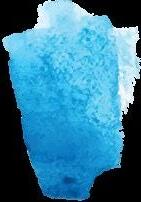

The course was offered again in spring 2021 and Frank plans to work with the University Honors Program this summer to make it a regular offering.
CHANGING THE CONVERSATION
The group is poised to build on its success in its first year as students return to campus this fall. WMC members will finally be able to get the hands-on machine shop experience Tarver and Carley envisioned when they first founded the club, and in-person meetings will likely help build a stronger community.
The club can also begin to focus on its larger mission— changing the culture of machine shops. Having the organization not only raises awareness of the issue, but also creates more opportunities for women and gender minorities to gain hands-on experience in the shop, allowing them to contribute to the conversation about a more inclusive environment.
“This is a really important time for positive change to take place,” said Mullin. “The words haven’t all been written yet. We need to develop an inclusive narrative [for women machinists] and propagate this message at UC Davis through experiences and projects.”
24 UC DAVIS COLLEGE OF ENGINEERING ENGINEERING PROGRESS / FALL 2021 25
UC Davis
Give Day’s Impact on the College of Engineering
GIVE
Here are how some of these gifts are supporting the college:
By Rachel Steere
UC DAVIS’ FIFTH ANNUAL GIVE DAY was held this year on April 16-17.
Give Day is a 29-hour online fundraising drive that brings the community together to celebrate the Aggie spirit by sharing, following or financially supporting UC Davis programs that have made an impact on the lives of people everywhere. The college, its eight departments and many student clubs have demonstrated tremendous flexibility and resilience in the last couple of years and have gained experience dealing with unforeseen circumstances, solving unique problems, learning innovative technology and connecting in new ways. Donors recognized this, and this past Give Day the College of Engineering broke all of its previous records, raising more than $160,000 from 500 gifts to support clubs, departmental priorities and students facing financial challenges.
THE DEPARTMENT OF BIOMEDICAL ENGINEERING is using their Give Day funds for the Biomedical Engineering Graduate Group’s (BMEGG) student retreat. “This is an important opportunity for vertical integration amongst our graduate student classes, said Christal Wintersmith, graduate coordinator and student services advisor for BMEGG. “Firstand second-year students will have the opportunity to engage with more senior students over two days of team building activities, research talks and discussions about current issues in academia as they learn the ropes of graduate school.”
BMEGG’s mission is to provide the highest standard of student education, research and service in biomedical engineering. They have been educating and mentoring biomedical engineering graduate students for more than 50 years, and their graduates have gone on to be leaders in academia, industry, medicine and many other professional fields.
THE DEPARTMENT OF MATERIALS SCIENCE AND ENGINEERING is using their funds on a number of things, including funding their senior design course, senior awards for graduation and supporting students like Nicole Shuman.



Fourth-year materials science and engineering student Nicole Shuman found materials science as a returning college student and is determined to use her knowledge to inspire others through outreach, teaching and mentorship. She was accepted through the UC Davis transfer admission guarantee program and enrolled in fall 2019. Though the transition was difficult, AvenueE and the department supported her at every turn.
“I’m so grateful that I picked this major at this college in this department because everyone was so nice and gave me a great experience,” Shuman said. “I want to be the professor that I wish I had when I first attempted college, and want to be as inspirational and knowledgeable as my materials science professors were so I can help create more leaders.”
DAYGIVE DAY 26 UC DAVIS COLLEGE OF ENGINEERING ENGINEERING PROGRESS FALL 2021 27
Photo courtesy of BMEGG.
Photo courtesy of Nicole Shuman.
THE DEPARTMENT OF CIVIL AND ENVIRONMENTAL ENGINEERING is using their funds to benefit students through a hardship stipend. Colleen Bronner, an associate professor of teaching and vice-chair of undergraduate studies in the department, has been a big proponent of raising those funds, and getting them to the students who need it most. Michelle Zhang ’22 is one student who benefited.

“The Department of Civil and Environmental Engineering has supported many of my peers who faced hardship in the last year with additional aid, including increased research and internship opportunities with faculty, flexible academic accommodations and many resources related to health and well-being. Though we had all been learning remotely, I have never felt a greater sense of belonging and motivation from the department, my professors and my peers,” said Zhang. Michelle Zhang, Class of ’22. (Karin Higgins/UC Davis)
Dean’s Executive Committee Challenge Clubs
The Dean’s Executive Committee (DEC), composed of executive-level leaders, venture capitalists and successful entrepreneurs, works closely with staff and faculty to assist the College of Engineering through advocacy, prospective donor identification and cultivation and personal philanthropy. This year, the DEC invited engineering student clubs to submit a one-minute video pitch during their February meeting and they picked three clubs that they wanted to benefit from their Give Day Challenge. Each of those clubs received $10,600, in addition to the funds each club raised on Give Day.
GIVE DAYGIVE DAY
THE CLUB OF FUTURE FEMALE ELECTRICAL ENGINEERS (COFFEE)

is using their funds to provide end-ofthe-year scholarships to members in financial need. They also plan to use the money for funding future in-person community building activities and outreach events.


THE SPACE & SATELLITE SYSTEMS CLUB is using their funds to purchase and manufacture all flight unit components and instrumentation for their CubeSat, a class of small research spacecraft. They will also use the funds to perform additional environmental tests needed, such as thermal and vacuum chamber testing, as well as fund their second planned CubeSat mission, REALOP II. “Thank you to all donors, the Dean’s Executive Committee and the College of Engineering for helping us achieve this goal and providing us with this opportunity,” said Christopher Hipolito, co-president of the club.
Members of the Space & Satellite Systems Club. (Joshua Moy/UC Davis)
ENGINEERS WITHOUT BORDERS (EWB) plans to put their Give Day funds towards their international projects. The Kenya project will be able to fund a remote assessment trip to conduct a hydrogeological and geophysical survey. This will help determine the best location to construct a borehole with a hand pump. The funds will also help cover water quality testing supplies, as well as costs associated with obtaining the necessary environmental permits. The Bolivia project plans to use the funds to support the construction of composting latrines in the Parque Colani community. The Peru program plans on using the funds to conduct a remote monitoring and evaluation trip in the community of La Huaylla and a remote assessment trip in the community of Saparcon Bajo. In the future, they may also use the funds for a remote implementation trip in Saparcon Bajo to build a new spring box.
28 UC DAVIS COLLEGE OF ENGINEERING
ENGINEERING PROGRESS / FALL 2021 29
Members of COFFEE. (Joshua Moy/UC Davis)
Members of EWB. (Joshua Moy/UC Davis)
YOUR FLYING TAXI IS ALMOST HERE
 By Noah Pflueger-Peters
By Noah Pflueger-Peters
IIn less than a decade, your taxi might come from the sky instead of the street. Once a hallmark of science fiction, flying taxis have become the cutting edge of aerospace engineering thanks to researchers like UC Davis’ Seongkyu Lee, an associate professor of mechanical and aerospace engineering (MAE). Lee’s group is conducting groundbreaking aeroacoustics research to lay the computational groundwork to make air taxis a reality. The emerging field, known as urban air mobility (UAM), promises to develop electric vertical take-off and landing (eVTOL) vehicles to transport people and goods across short distances. If successful, UAM will create a new method of transportation, alleviate traffic congestion in cities and generate an estimated $1 trillion in the coming decades, according to Morgan Stanley.
“If this is successfully implemented, it is going to change our daily lives, [start] a new golden age in aerospace engineering and completely change the landscape in industry and the job market,” said Lee.
Though the excitement is palpable, one of the biggest obstacles is noise. Anyone who’s been around a helicopter or a drone knows how loud they can be, and air taxis will
face that same risk. The goal is to make vehicles blend into existing city noise by being, at most, as loud as cars—about 62 decibels. If the vehicles are too loud, city residents and officials will likely reject them.
“Noise is one of the biggest challenges in urban air mobility,” he said. “If the noise is not acceptable, then this business will not be successful.”
BUILDING AN INFRASTRUCTURE
To make viable eVTOL designs, researchers need to accurately predict how loud their aircraft will be. This means accounting for two types of noise—tonal and broadband noise. Tonal noise is the repetitive and intermittent sound rotors make as they spin and interact with the air. Broadband noise is the whooshing sound the aircraft makes as it flies. Both are equally important.
Broadband noise is difficult to predict because it’s caused by complex air flow turbulence from rotor blades or wings— which involve difficult fluid physics problems. Lee is among the first to use highly-accurate computational fluid dynamics (CFD) software to unravel the detailed physics of how air flows around of UAM aircraft and creates noise.

“PROFESSOR LEE’S WORK
IS A GIANT STEP FORWARD FOR THE SEMI-EMPIRICAL PREDICTION OF ROTOR BROADBAND NOISE,”
Goldman, who uses UCD-QuietFly at industry leader Archer Aviation. “With its incorporation in the UCD-QuietFly program, he has created a powerful and accessible tool to aid in the design of the next generation of quiet UAM vehicles.”
“Professor Lee and his research group have made important contributions to the modeling of acoustic noise with their UCD-QuietFly software,” said Ben Berry, a lead engineer at the eVTOL company Kitty Hawk. “Reducing noise is critical to public acceptance, and improved prediction capabilities such as UCD-QuietFly will help the industry as a whole make better design choices to achieve this.”
“UCD-QuietFly is an especially accurate and practical tool for predicting broadband noise of eVTOLs in conceptual and preliminary design stages,” said Sehwan Park, a lead engineer at Hyundai Motor Company.
As part of a new project funded by the U.S. Army under the Vertical Lift Research Center of Excellence (VLRCOE) at Pennsylvania State University, Lee’s group will also develop multi-fidelity models of aerodynamic and aeroacoustic interactions between prop-rotors and wings to inform UAM aircraft development. The goal is to improve the accuracy of medium-fidelity models using tools from the highlydetailed CFD database.
Since 2019, Lee and his Ph.D. student Sicheng (Kevin) Li have worked through this complexity and developed an efficient, physics-based broadband noise prediction tool called UCD-QuietFly, which has been widely adopted by the eVTOL industry.
“Professor Lee’s work is a giant step forward for the semiempirical prediction of rotor broadband noise,” said Ben

Additionally, Lee has been funded by the NASA University Leadership Initiative (ULI) to develop tools for UAM researchers to optimize their designs, given constraints on noise, design and performance. In collaboration with UC San Diego, Lee’s team will develop new acoustic theories and codes that will be implemented in NASA’s multidisciplinary design, analysis and optimization program for simulating aircraft designs.
“Our research is not just focused on noise prediction—we also aim to reduce noise and we want to achieve this in the system-level design,” he said.
A
model of the flow physics
resulting noise from a UAM quadrotor aircraft, generated with Ph.D. student Zhongqi (Henry) Jia. Graphic courtesy of Seongkyu Lee.
30 UC DAVIS COLLEGE OF ENGINEERING ENGINEERING PROGRESS / FALL 2021 31
– Ben Goldman
detailed CFD
and
UC Davis’ Seongkyu Lee is tackling rotorcraft noise, an important challenge in making flying taxis a reality
Associate professor Seongkyu Lee. (Nikita Mistry/UC Davis)
An artist’s rendering of what an urban air mobility environment might one day look like. Photo: Lillian Gipson/NASA
PAVING THE WAY
Like any flying vehicle, air taxis will be subject to a regulated flight path—known as an airspace corridor— that’s based on safety, equity and environmental impact. Since air taxis are electric, they pollute mainly through noise. As part of a new project with Caltrans, Lee’s team will collaborate with UC Berkeley to create a “noise map” for a 3D digital UAM airspace corridor simulation software that will help policymakers develop airspace corridor guidelines in California.


To do this, they will study how eVTOL noise propagates across the community under different conditions, as aircraft can be much louder when it’s cold, cloudy or windy, and having multiple UAM vehicles flying at once may amplify sound.

“The state government will make the final decision about this operation, but we are going to help them make a better decision with this computational tool,” he said. “I’m very excited about this project because it certainly will expand our lab capability to more practical research. This is a first step into this research area, but I think this is the right time.”
Lee says UAM is an exciting place to be, especially for students. The MAE department recently created an undergraduate course on drones and quadcopters and a graduate course on rotorcraft—both of which he teaches. The last three NASA university student design competitions,
which UC Davis aerospace engineering teams won twice, were also focused on solving a UAM challenge, showing NASA’s interest in the area. Industry demand is also booming.
“UAM will open up a new golden age of aerospace engineering,” he said. “This community is growing and students are very excited about the opportunities. I’m glad that students are learning and working on exciting aircraft research at universities and then finding jobs in the same field after graduation. Eventually, they will change the world and make science-fiction dreams come true.”
Lee and Ph.D. student Sicheng (Kevin) Li, who developed UCD-QuietFly together. (Nikita Mistry/UC Davis)

Aerospace Engineering Teams Win FIRST AND SECOND in NASA’s University Design Challenge
UC DAVIS AEROSPACE ENGINEERING STUDENTS continued their dominance in NASA’s Aeronautics University Design Challenge, with two teams tied for first and another tied for second in the 2020-21 competition.
NASA’s annual competition challenges U.S. university students to solve some of the biggest problems facing aerospace engineering today. This year’s competition, titled “Weather-Tolerant Operations for Urban Areas,” challenged students to develop a small rotorcraft vehicle that can operate safely in cities under weather conditions such as high winds, low temperatures and poor visibility during storms, fog and smoke.
The winning designs are the culmination of two quarters of work in aerospace engineering students’ senior design course, which has been taught each year by mechanical and aerospace engineering professor Case van Dam. Every year since 2017, UC Davis teams have placed at least third and have finished first or tied for first four times—2021, 2019, 2018 and 2015. Learn more about the competition.
An artist’s conecpt of the Allweather Taxi Pilots Experimental Aircraft, or ATP-XW-Blizzard, one of the winning designs developed by a team of UC Davis aerospace engineering students. (Aristide Fertig/UC Davis)
32 UC DAVIS COLLEGE OF ENGINEERING ENGINEERING PROGRESS FALL 2021 33
Graphic courtesy of Hyundai Motor Company.
An artist’s rendering of the Electric Transport 1, designed by UC Davis aerospace engineers to fly in San Francisco under heavy fog. (Grace Carley)
The Algorithm Will See You Now:
Chen-Nee Chuah and Xin Liu on Big Data, AI and Machine Learning in Medicine
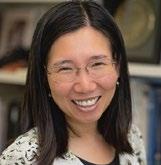
MACHINE-LEARNING ALGORITHMS , while not intended to replace human doctors, can be powerful tools to help process and make sense of patient data. Electrical and computer engineering professor Chen-Nee Chuah and computer science professor Xin Liu are preparing sensors and algorithms to work alongside doctors to treat patients.

Chuah explains deep learning algorithms in medicine are intended to identify patterns from data that a human might miss or take over labor-intensive tasks, such as monitoring a hospitalized patient’s every breath or heartbeat. The algorithms will digest a large amount of real-time, raw data to help doctors diagnose disorders or figure out a patient’s prognosis.
Liu says the time is right for big data in healthcare. This is because of technical advances in AI, including computer vision, deep learning algorithms, natural language processing, and an increased use of mobile devices that can democratize healthcare and enable personalized medicine. Chuah points to greater data storage, computation power and edge computing’s potential to enable intelligent learning tasks on computer networks.
Chuah had always wanted to apply data science and intelligent learning techniques to benefit society. As a patient at UC Davis’ medical center, she noticed a ‘digital gap’ between how people practiced healthcare and the advanced data analytics and AI/ machine learning techniques she used as a professor in computer networks. During her sabbatical she reached out to the UC Davis Health School of Medicine’s health informatics group and began working with Dr. Jason Adams, an ICU physician in pulmonary and critical care medicine.
Liu said she’s motivated by the potential advances in AI technology to help people live better and healthier lives. “My parents are aging and technology can help them stay healthier and more independent and better enjoy their golden years.”
She says big data in medicine could greatly benefit the elderly. “The potential for [geriatric therapy] is multifold, from monitoring cognitive functions to observing mobility to chronic disease monitoring and intervention.” For example, observing gait changes and warning that a patient is at risk of falling.
Both Chuah and Liu are addressing the COVID-19 pandemic. Chuah has collaborated with Adams to design AI-driven diagnostic and prognosis tests to predict who among newly infected patients under mechanical ventilators will develop serious lung injuries. They have also developed COVID surge prediction models using multivariate time analysis. Finally, she recently started working with mechanical and aerospace engineering professor Cristina Davis on her National Institutes of Health-funded project to develop a breath-based COVID test. Liu has worked with Dr. Katherine Kim to develop a COVID symptom tracking app relying on big data.

34 UC DAVIS COLLEGE OF ENGINEERING ENGINEERING PROGRESS / FALL 2021 35
Dr. Xin Liu, UC Davis (Dr. Xin Liu/UC Davis)
Dr. Chen-Nee Chuah, UC Davis (Dr. Chen-Nee Chuah/UC Davis)
By Cristina Deptula
Big data, artificial intelligence and machine learning can protect patients on ventilators. “Any patient-ventilator asynchrony can cause severe lung damage and it’s difficult to have a physician or a respiratory expert at each patient’s bedside 24/7,” said Chuah. “Automatic alarms have a high false positive rate, which can lead to physicians not responding as quickly as they should. A more intelligent algorithm can provide real-time critical alerts to providers without overwhelming them.”

Big data and machine learning algorithms can also prove especially good for monitoring the health of patients with chronic conditions such as diabetes. The technologies let clinicians observe patients’ personal data with finer granularity, learning over time what’s normal for each person’s body. “Ten percent of the US population has diabetes and one in three has prediabetes. Integrating continuous glucose monitoring devices, wearable sensors such as the FitBit and dietary apps on our phones can provide comprehensive information to help doctors personalize medication and prescribe more effective lifestyle interventions,” says Chuah.
She’s also working on a Department of Defense-funded project, Endovascular Perfusion Augmentation for Critical Care, that will optimize critical care management, such as resuscitation after trauma, in real-time. In another NIH-funded project, she’s developing methods to analyze video screenings of young children for signs of autism to enable earlier intervention.
Liu is creating machine learning algorithms for digital sensing in healthcare applications. “Digital sensing involves non-invasive monitoring of vital signs and behaviors in both temporal and spatial overlays at various scales and granularities. Sensors we use include accelerometers, gyroscopes, visible light and infrared cameras, audio sensors, ECGs, glucose monitors, walking plates in motion labs, medical imaging devices, neuron sensors and electrophysiology devices.” She’s creating AI algorithms to analyze data from those sources to provide relevant insights for healthcare.
Liu and her lab also developed an AI-driven sensing system with an iPhone app collecting data with the phone’s accelerometer sensor (currently used by UC Davis clinical researchers), a web-based tool to aggregate and store data and a suite of AI algorithms to
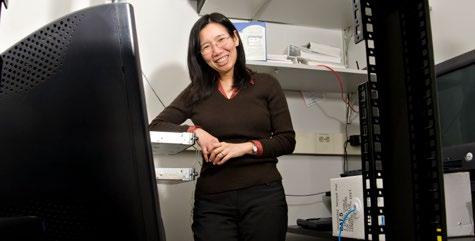
analyze sensory data. Their work could help predict recovery of mobility in ICU patients, identify strokes earlier and better predict prognosis for patients with brain injuries. These projects use AI algorithms for time-series sensory data from potentially multiple sources.
Chuah says researchers have made various advances towards fairness and accuracy of medical machine-learning algorithms for diverse sub-populations, including statistical methods of quantifying prediction uncertainty and incorporating fairness in the loss function of deep learning models. Liu advocates addressing diverse groups’ needs in the entire big data pipeline, including algorithm development, testing, deployment and redeployment, and having a diverse big data workforce.
Liu explains that patient privacy and data security are concerns in most big data research, and especially vital for healthcare. There are technical as well as regulatory ways to address this. “We are working on a type of algorithm called federated learning that allows data to stay with the person instead of being gathered by a central entity,” she said. This will streamline pre-screening for health conditions through people’s smartphones with data remaining safely on the patient’s phone.
Professor Izzat “Ed” Idriss (third from right) with geotechnical engineering faculty at UC Davis.
Chuah and Liu both emphasize that their work will not eliminate human physicians. “We aren’t replacing human doctors,” says Chuah. “We envision an AI-assisted clinical decision-making support system with humans in the loop.”
ENGINEERING PROGRESS FALL 2021 3736 UC DAVIS COLLEGE OF ENGINEERING
Dr. Chen-Nee Chuah. (Jason Spyres/UC Davis)
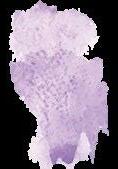
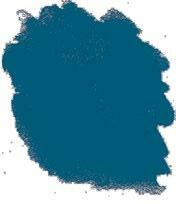
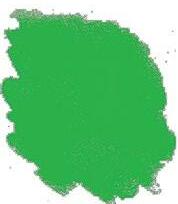
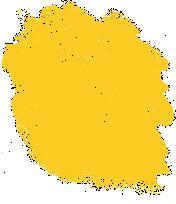
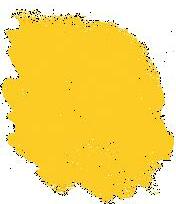
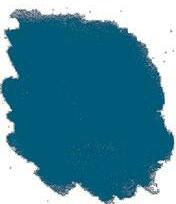
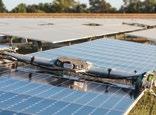
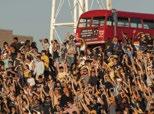
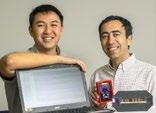






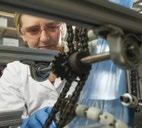
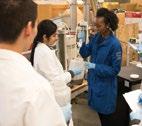




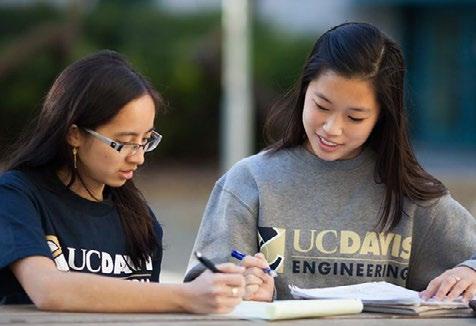
If you are an engineering alumni interested in this program, visit http://bit.ly/MentorCollectiveCOE 38 UC DAVIS COLLEGE OF ENGINEERING Campus Sustainability (U.S.) – UI GreenMetric World Ranking Best Public U.S. University – Times Higher Education Best Colleges for Your Money – Money Magazine University in the nation for Inclusiveness, Diversity and Internationalization – QS USA University Rankings # 2 # 5# 4 • American Indian Science and Engineering Society • Black Engineers Association • Chicano and Latino Engineers and Scientists Society • Pilipinx Americans in Science and Engineering • Out in Science, Technology, Engineering, and Mathematics • Society of Women Engineers STUDENT ORGANIZATIONS UC Davis technologies produced 115 startups in the last 10 years Best Public University for Social Mobility – Washington Monthly UNIVERSITY OF CALIFORNIA, DAVIS # 1# 1 • Biological & Agricultural • Biomedical • Chemical • Civil & Environmental • Computer Science • Electrical & Computer • Materials Science • Mechanical & Aerospace 4,538 Undergraduate Students 30.98% women 22.9% underrepresented groups 4.1 years—mean time to degree LEADR Student Support Center Engineering Design & Startup Centers 1,017 Graduate Students 330 M.S. 687 Ph.D 220 Total Faculty 13 Members of the National Academies $93 million in research expenditures (2019-20) (USNWR) Departments Biological and Agricultural Engineering (#3) and Civil Engineering (#11) among the nation’s top graduate engineering programs U.S. News and World Report 2022 # 3 # 11 Mentor Collective at UC Davis College of Engineering The Mentor Collective program connects first-year engineering students (freshmen and transfers) with a recent UC Davis engineering graduate. These alumni mentors are ready to listen, inspire and help students navigate challenges and recognize opportunities. Students will learn what to expect in classes and how to approach new experiences; they will also gain career advice and valuable insights from alumni in the field.
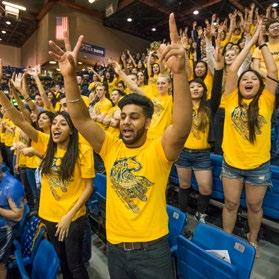
UC Davis College of Engineering One Shields Avenue Davis, CA 95616 facebook.com/UCDavisEngineering instagram.com/ucdavisengineering linkedin.com/showcase/uc-davis-college-of-engineering twitter.com/UCDavisCoE engineering.ucdavis.edu Ranked 5th Nationally for Public Universities – The Wall Street Journal/ Times Higher Education College Rankings
















 By Noah Pflueger-Peters
By Noah Pflueger-Peters








 - MICHAEL COFFEY
- MICHAEL COFFEY





























 By Noah Pflueger-Peters
By Noah Pflueger-Peters



























